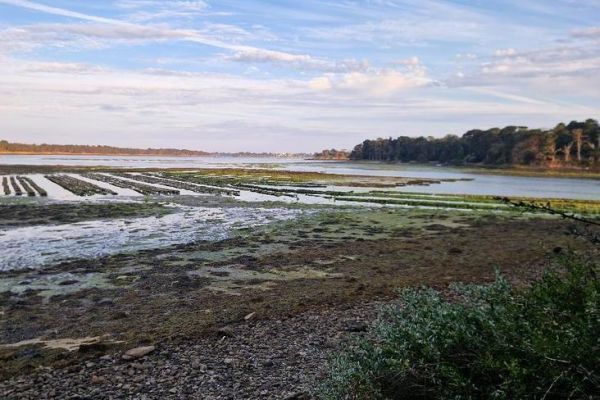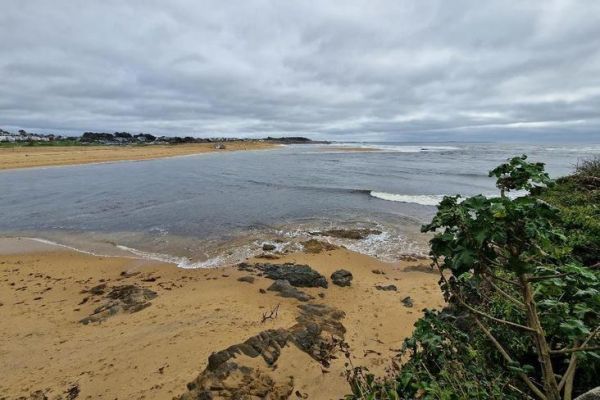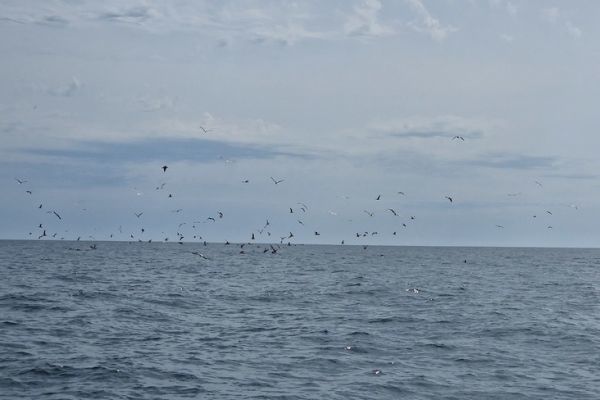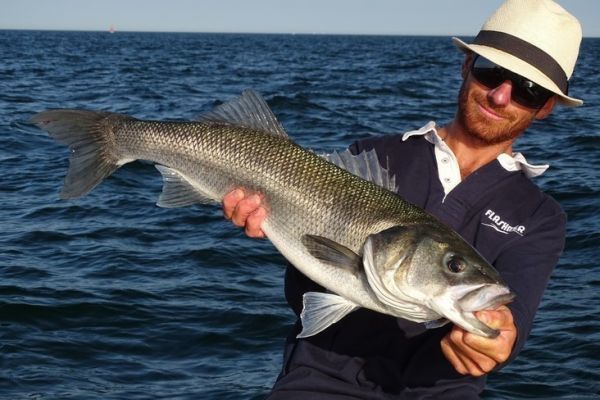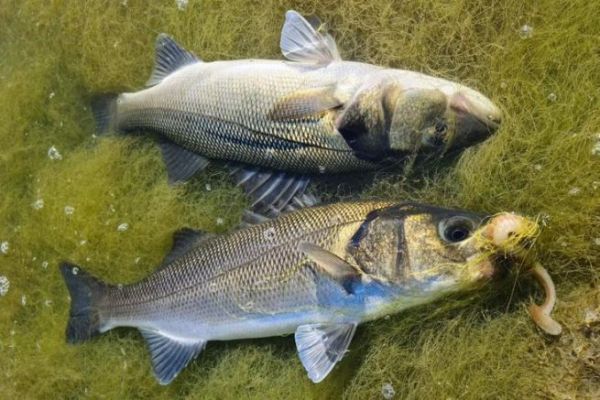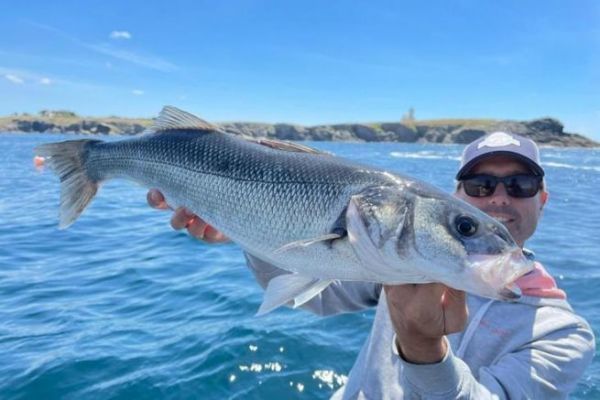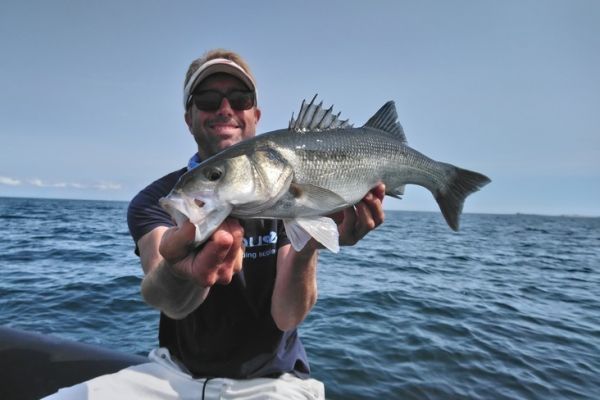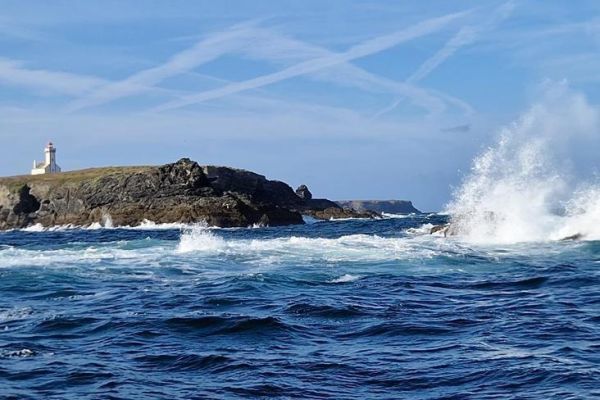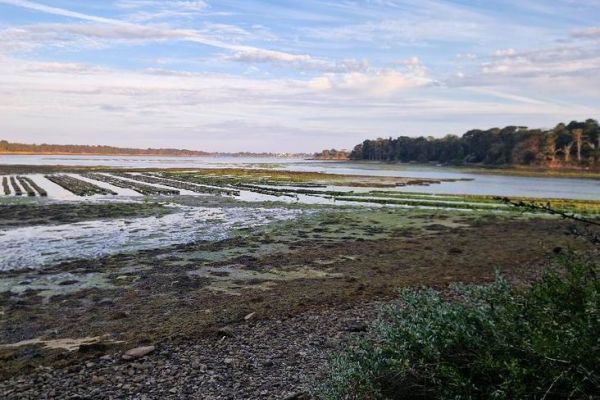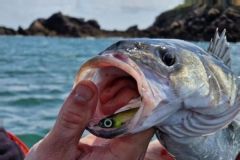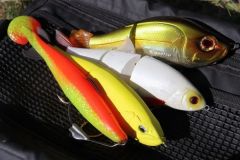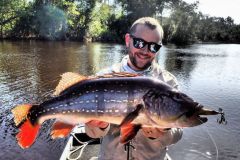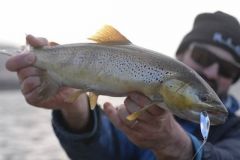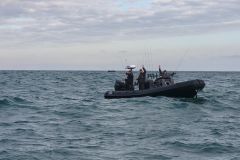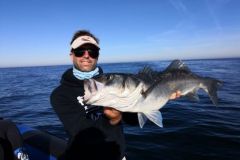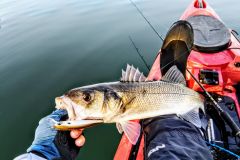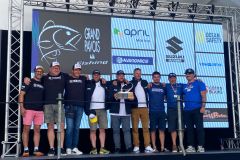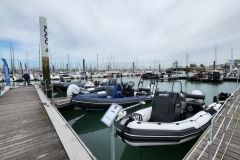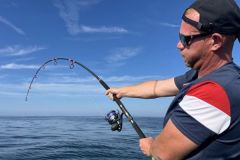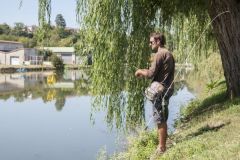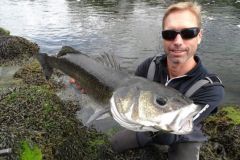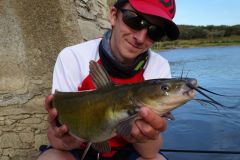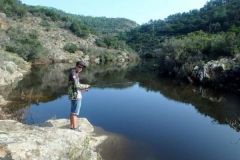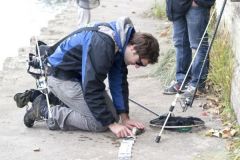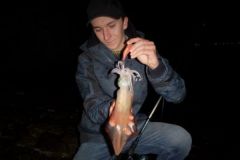Why oyster beds?
Oyster beds are artificial structures whose function is to support pockets filled with swarms of oysters in which they will grow. Raising the oyster bags off the ground allows them to be swept by the current, oxygenated and, above all, to filter the water and feed on plankton.
So that oyster farmers can lay and turn the bags regularly, and remove them once they've reached maturity, the beds are positioned in shallow areas that are uncovered at low tide. They are therefore often close to the shore and can be fished by all shore fishermen. Please note, however, that it is customary to ask the owners for permission before venturing onto the oyster beds.
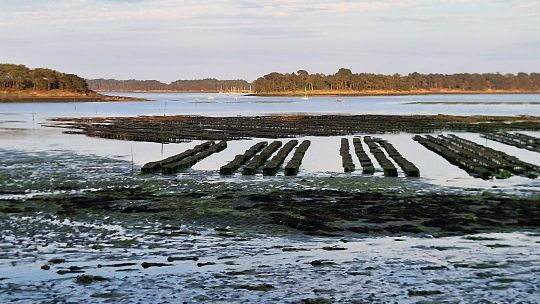
Why fish oyster beds?
Oyster beds are excellent bass spots, because like all man-made structures, they concentrate life and are the origin of a food chain with predators at the top.
Sea bass can hide in the pens to rest out of sight of fishermen, but they can also lie in wait to surprise their prey.
In addition, the metal structure of the oyster beds encourages the growth of algae, protecting a large number of micro-organisms and crustaceans. What's more, the oysters release their seeds, on which these same micro-organisms feed.
The parks are home to a huge number of marine species, and you'll come across a wide variety of crustaceans, led by green crabs and shrimps, as well as numerous species of fish, including mullet, which regularly mingle with sea bass.
Which oyster beds to prospect?
All oyster beds are capable of harboring sea bass, even the oldest ones that are not farmed. However, it's obvious that those covered in bags and a few years old are more teeming with life and therefore predators.
Nevertheless, the best ones are those exposed to or close to a prevailing current, as it is a natural food carrier. What's more, if it's close to a drop-off or a change in substrate, this multiplies the chances of encountering concentrations of marauding sea bass.
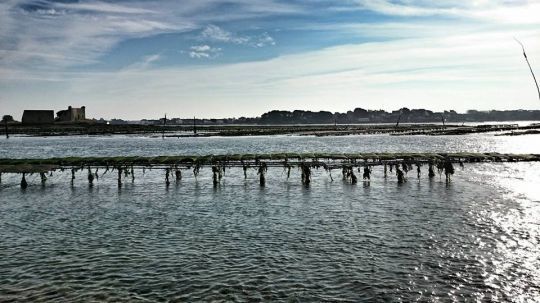
How do you approach them?
While it's possible to sight-fish in the parks when the rows are uncovered, you'll often have to do so when there's still between 30 cm and 1 m of water above, i.e. at the end of the drop and the beginning of the rise.
As with most spots, but even more so with oyster beds, it's very important to start on the outside. The first reason is that bass don't always sail under the pockets, but sometimes on the edges. And the second is that it's much easier to get a big bass out of the pens if it's caught on the edge of the rows rather than in the middle.
I therefore recommend that you start with the periphery and short casts, because 30-40 metres away from you, it will be very easy for even a small sea bass to probe without you being able to restrain it.
Then extend the throws to the first rows and then to the following rows, if possible in line with them.
Waders are obviously an essential accessory for accessing and fishing most of it.
Which lure, which technique?
The best and safest way to fish oyster beds is, of course, with surface lures. Poppers and stickbaits are king on this type of spot. Weightless shads with buzzing action are also particularly effective, especially as you can let them drop a little into the water column and tempt bass that refuse to break the surface.
However, it is also possible in the widest lanes, and if the parks are easily accessible, to carry out drop shot or scratch fishing between the rows.
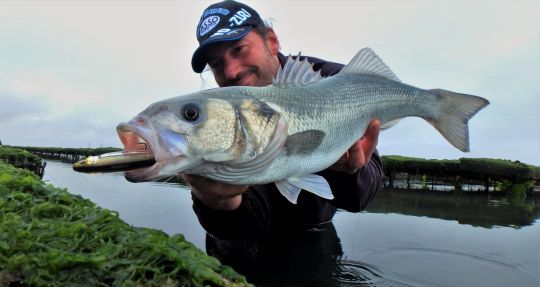
The right equipment
As you can see, it's difficult to extract large bass from this type of area. So you'll have to rely on powerful equipment and forget about finesse!
A 20-80 g rod fitted with a 4000 reel and PE1.5 braid is ideal. You'll want a fluorocarbon leader in 40/100 to resist abrasion, but also to be able to fight authoritarian battles with a tight drag and sometimes a hand on the spool...
Breakage will be a regular occurrence on the biggest subjects, but there will be plenty of touches and plenty of surprises!

 /
/ 